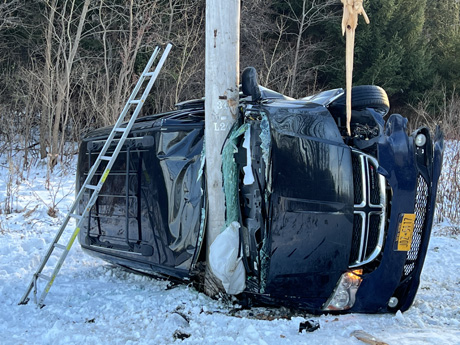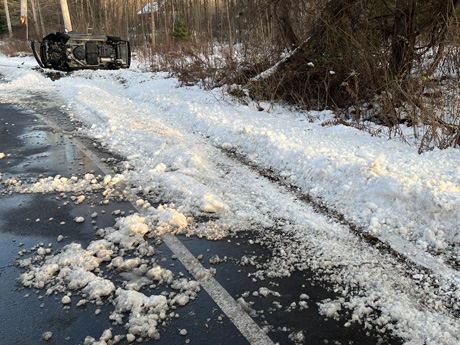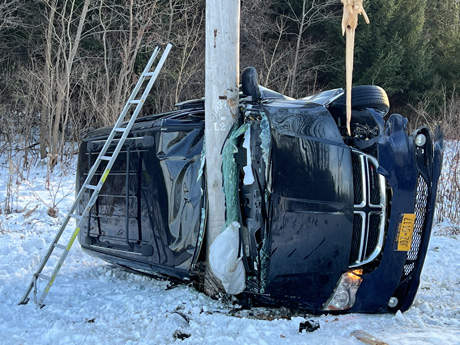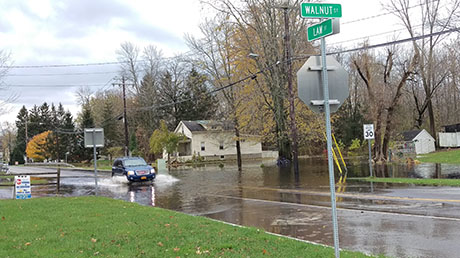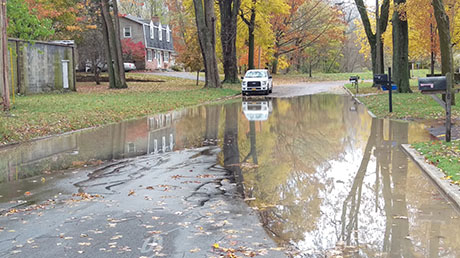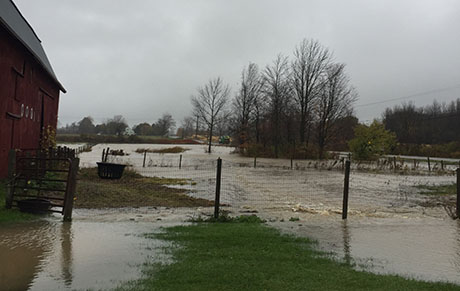The driver behind the wheel of a minivan that struck a utility pole Wednesday afternoon on Law Street, causing a significant power surge in the area, has not been located yet.
Sgt. Mitch Cowen said Thursday morning that police are pretty confident they know who the driver was, that he's not from the area and that the vehicle was not stolen.
Cowen said police are looking for him in order to question him about the accident.
Witnesses saw the man running from the accident and provided a description to police. A K-9 was deployed shortly after the accident in an attempt to find his trail, but that effort failed to find the driver.
At least 287 homes in the area of Chestnut Street, South Jackson, and to both the north and south of those streets, lost power. The power surge caused electric meters on the outside of dozens of homes to blow out, with some of those houses displaying visible black char marks around the meters.
National Grid crews worked through Thanksgiving morning restoring power. The pole and main power line to the area were in working order by 10 or 11 p.m. on Wednesday night after crews worked to restore power to each house one at a time. The meters on all 287 homes were replaced. For residents who were not home last night, crews returned Thursday morning to locate them and complete the work (power at the breaker box needed to be turned off before the meter was replaced).
"When high voltage lines are negatively impacted, as they were last night, it can create an unsafe condition for residences," said David Bertola, a spokesman for National Grid. "The pulling, checking and replacing of electric meters is a standard safety procedure that our crews perform under circumstances such as these."
A worker last night recommended residents check all surge protectors. He said residents would know right away if the surge protector was blown. If they were off before power was restored, when turned back on, if blown, they will spark and smoke. If already plugged in, they may no longer work. Some may work but should have a light to indicate they no longer provide surge protection.
Each surge protector is rated differently. Some surge protectors can handle larger bursts of energy but can never exceed their rated capacity, and the capacity is cumulative. As HowToGeek.com notes, if a surge protector is rated for 1,000 joules of energy and it gets one joule at a time over a period of time, it will need to be replaced after 1,000 incidents. If a highly rated surge protector takes a major power surge, it may still function but it may also be near the end of its life span.
Replacing all surge protectors after a major power event is often recommended by experts.
The Batavian spoke to an electrician today who recommended checking all appliances. Anything receiving an active electrical current at the time of Wednesday's surge could be toast, or close to it.
At least one resident in the area is without heat after the power surge damaged the circuitry of the forced air heater.
A National Grid crew member advised residents who suffered an economic loss as a result of the power surge to file a claim with National Grid.
Bertola said customers with claims can email National Grid at ClaimsDept@nationalgrid.com or by calling (315) 428-6536.
A law enforcement source said that typically, National Grid attempts to recover damages from the driver's insurance company -- and it appears this driver was insured -- when an accident damages a utility pole.
The damages, in this case, could include the pole and all of the subsequent residential repair work and any damages sustained by residents.
Photos by Howard Owens.
